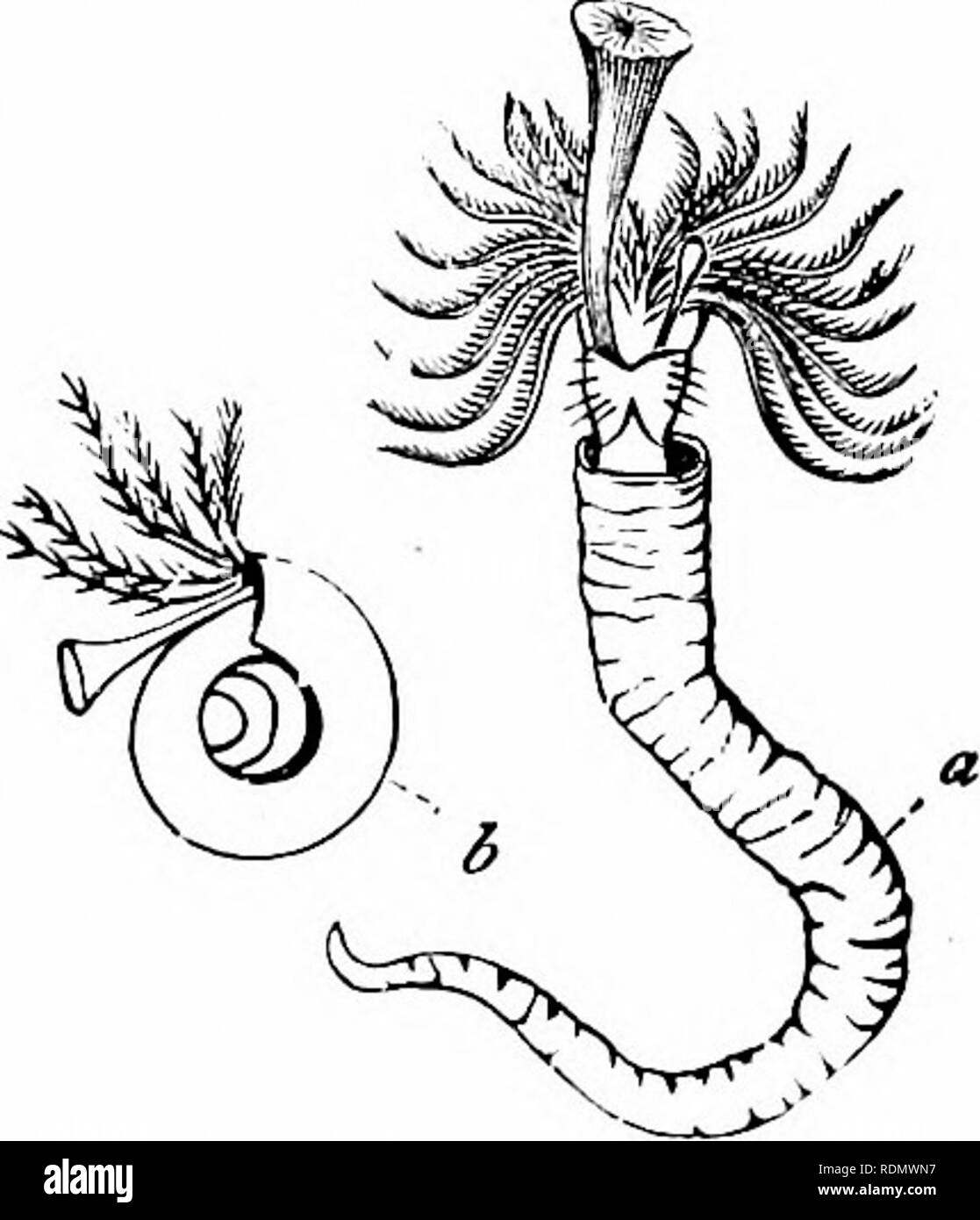. Text-book of zoology for junior students. Zoology. ANAETHEOPODA. 133. FiL'. 84.—Tuliicola. rt Serinila contor- iHpUcalu, sliowiii,' tlif- lintncliiiH and veniently divided into two groups, according as they secrete for themselves a protective tube {Tuhicola), or live a free life (Er- rantid); but the general organisation in these two sections is essen- tially the same. The Tubicolous Annelides or Tube-worms derive their name from the fact that they have the power of protecting themselves by means of tubes (Lat. tuba, a tube ; and colo, I inhabit). In some cases (fig. 84) the tube is composed

Image details
Contributor:
The Book Worm / Alamy Stock PhotoImage ID:
RDMWN7File size:
7.1 MB (215.5 KB Compressed download)Releases:
Model - no | Property - noDo I need a release?Dimensions:
1465 x 1704 px | 24.8 x 28.9 cm | 9.8 x 11.4 inches | 150dpiMore information:
This image is a public domain image, which means either that copyright has expired in the image or the copyright holder has waived their copyright. Alamy charges you a fee for access to the high resolution copy of the image.
This image could have imperfections as it’s either historical or reportage.
. Text-book of zoology for junior students. Zoology. ANAETHEOPODA. 133. FiL'. 84.—Tuliicola. rt Serinila contor- iHpUcalu, sliowiii, ' tlif- lintncliiiH and veniently divided into two groups, according as they secrete for themselves a protective tube {Tuhicola), or live a free life (Er- rantid); but the general organisation in these two sections is essen- tially the same. The Tubicolous Annelides or Tube-worms derive their name from the fact that they have the power of protecting themselves by means of tubes (Lat. tuba, a tube ; and colo, I inhabit). In some cases (fig. 84) the tube is composed of carbonate of lime, ;ind is a genuine secretion from the body. In other cases, the tube is composed of grains of sand or pieces of broken shell, cemented together by a glut- inous secretion from the surface of the body. In all the Tuhicola the respiratory organs are in the form of branched filamentous external gills, in which the fluid of tlie pseudohtemal system is suljjected to the action of the outer watei'. They are therefore " Branchiate " Annelides. As they live in tubes, however, and do not voluntarily expose m(jre than the anterior end of the body, the branchite are all ])laced on or near the head. Tlie filaments of which the gills ar.e composed (fig. 84, n) are richly ciliatetl, and as the pseudohtemal fluid is usually red, tliey have generally a beautiful scarlet coloui'. The most familiar of the Tuhirola is the Herpida (fig. 84, «), the contorted and winding tubes of which must be knowir to every one as occurring on shells or stones on the sea-shore. One of the cephalic filaments in Hvrpula is much develojjed, and its extrem- ity forms a kind of conical plug or "operculum, " which serves to close the mouth of the tube when the animal is reti'aeted within it. In Spirorhis (fig. 84, h) the shelly tube is coiled into a flat spiral, which is fixed to some solid object. It is of extremely com- mon occurrence on the fronds of sea-weed, and on other